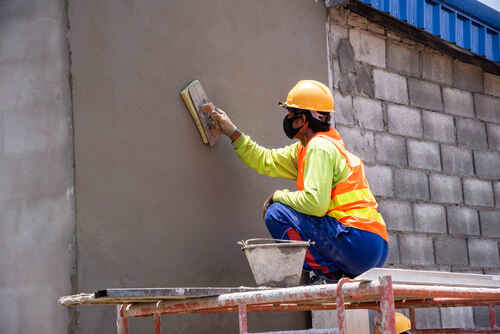How to Calculate Cement and Sand for Plastering
When you are planning to plaster a wall, it’s crucial to know the right amount of materials needed to avoid waste and ensure a smooth finish. In this blog post, we will explain how to calculate the quantity of cement and sand required for plastering a wall with a given thickness and mix ratio.
Step-by-Step Calculation
Let’s take an example of a 12 ft by 12 ft wall with a plaster thickness of 12 mm and a cement-to-sand ratio of 1:4.
Step 1: Calculate the Volume of Plaster
First, we need to calculate the volume of plaster required.
Wall Area: The area of the wall to be plastered is given by multiplying the height and the width of the wall.
Volume of Plaster: The volume of plaster is the area of the wall multiplied by the thickness.
Step 2: Calculate the Dry Volume of Mortar
The volume of wet plaster needs to be increased by 33% to account for the dry volume.
Step 3: Calculate the Quantity of Cement and Sand
The cement-to-sand ratio is given as 1:4, meaning 1 part cement to 4 parts sand. Therefore, the total parts = 1 + 4 = 5.
Volume of Cement:
Volume of Cement:
Step 4: Convert Volumes to Bags and Cubic Feet
For our example:
Sand: The sand volume is already in cubic feet, so no conversion is needed.
Conclusion
By following these steps, you can easily calculate the amount of cement and sand required for plastering any wall. This not only helps in efficient planning but also reduces material wastage. Use our Plaster Calculator to make these calculations quickly and accurately for your projects.
FAQs
Why do I need to add 33% to the wet volume for the dry volume of mortar?
When calculating the dry volume of mortar, we add 33% to the wet volume to account for the voids and bulking of sand and the loss during mixing and handling.
What is the typical cement-to-sand ratio for plastering?
The typical cement-to-sand ratio for plastering is 1:4, meaning one part of cement to four parts of sand. However, this ratio can vary based on specific project requirements.
How do I convert the thickness of plaster from millimeters to feet?
To convert the thickness from millimeters to feet, divide the thickness in millimeters by 304.8. For example, 12 mm is equivalent to 0.03937 feet.
How many cubic feet are there in a bag of cement?
A standard bag of cement typically contains 1.25 cubic feet of cement.

Check out 4 Similar Calculators: